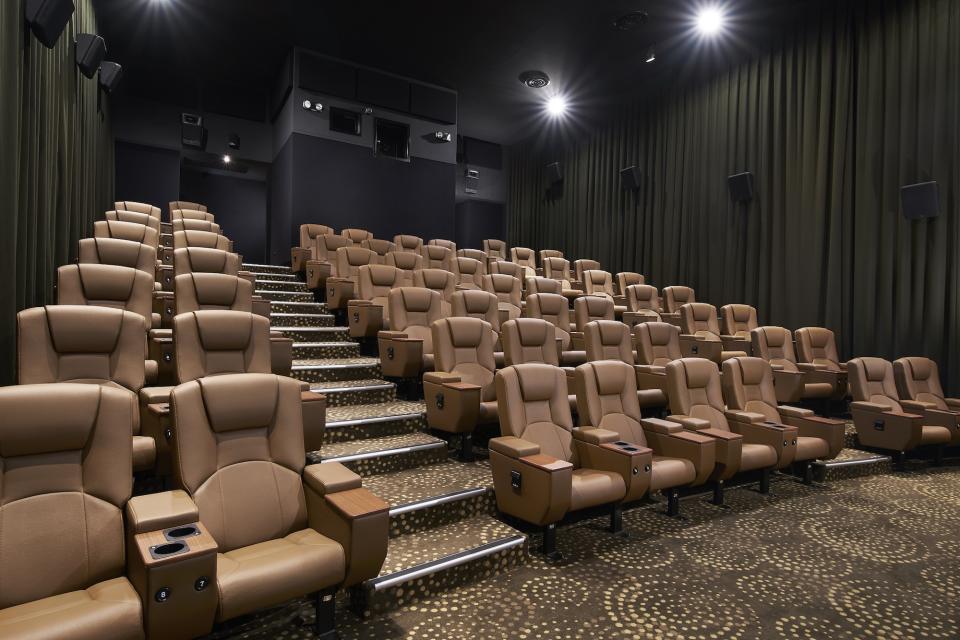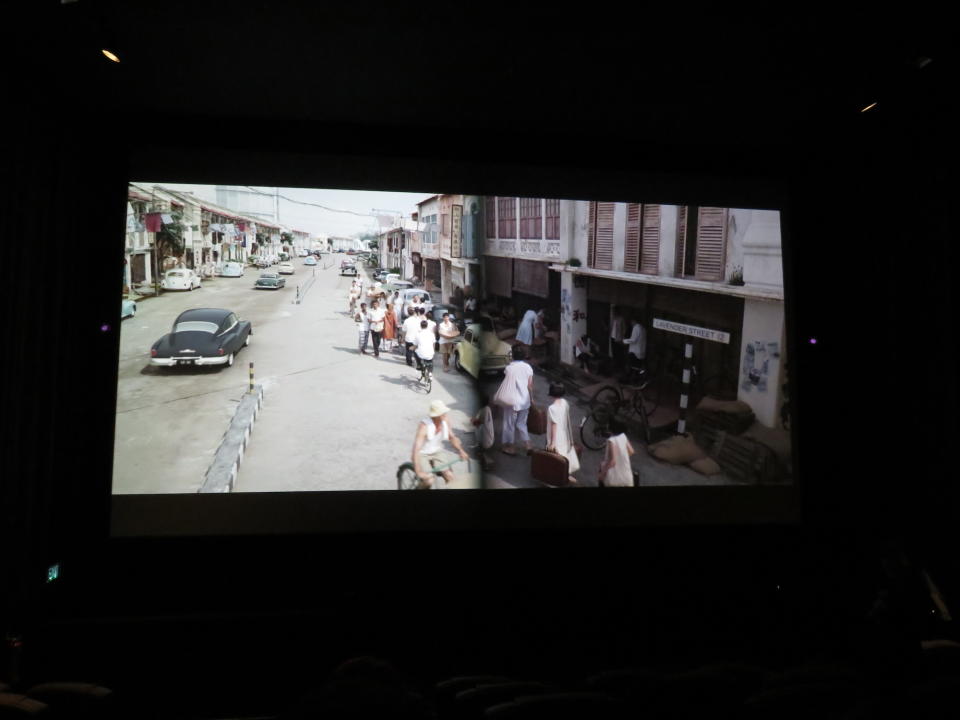New Golden Village cineplex at SingPost Centre debuts laser projection technology

Golden Village is opening a new multiplex at SingPost Centre in Paya Lebar on Friday (6 October) that boasts laser projectors for all its eight auditoriums, which promise better picture quality.
It features a new category of premium halls, called Duo Deluxe, which is priced below its existing Gold Class tickets. The Duo Deluxe seats have smaller side tables and feature a different type of seats as compared to Gold Class tickets. Golden Village Paya Lebar also screens 3D movies.

Alcohol and collectibles available at the new Grab and Gold Cafe
The new cafe is open-concept, as compared to a more formal dining experience at other outlets like the one at Suntec City. Beer is available, with an opening promotion of $10 for two bottles.
Collectibles for Star Wars, Marvel, Transformers, and Harry Potter are also sold at the cafe.

Laser projection – what is it?
The cinema halls use laser projectors that can project films at 2K resolution. Why 2K and not 4K resolution?
“Usually, movies don’t come in 4K resolution [at present],” explained Sebastian Fong, Technical Services Manager for Golden Village. “A 4K machine also costs much more than a 2K machine,” he said.
The projectors, manufactured by Barco, project images at a brightness of 20,000 lumens (for the hall that screens 3D movies) or 15,000 lumens (for the other seven halls), Conventional projectors usually project images at a brightness of between 10,000 to 11,000 lumens.
“However, the brightness required depends on the size of the screen,” said Eddie Tan, Entertainment & Corporate General Manager for Barco. “Let’s say you have a 10-metre screen size. You need about 10,000 lumens to drive the screen.”

Improved picture quality
One of the most significant differences to the naked eye is the brightness of the films screened. Golden Village provided a side-by-side demonstration of a movie screened with a laser projector and one with a conventional projector.
There is greater colour contrast in the film using laser projectors, as seen in the images above and below. A more subtle improvement to the picture quality is the uniformity of the brightness on the screen.
Fong said “You will see a brighter area in the centre [when using conventional projectors] because you are using a lamp. Lamps focus on the centre, and the four corners [of the screen] will be slightly darker.”
The projectionist adjusts a conventional projector to compensate for the differing levels of brightness on the screen.
“Whereas for a laser projector, it will be the same level of brightness across all the corners of the screen,” elaborated Fong.

Lamps vs lasers
The difference boils down to how light is projected from a lamp and from a laser. A lamp will project light rays that are scattered, meaning that they will “spread out” as they travel over a distance. This partially explains the different levels of brightness on various parts of the screen.
However, due to the nature of how lasers work, the light rays are coherent and will retain their “thickness” over a distance, which accounts for the uniformity in brightness on the screen. “This benefits movies with a darker colour palette”, said Fong, “like ‘The Dark Knight’.”
The difference will also be more significant for films with a wider colour palette, like “Blade Runner 2049” and “Thor: Ragnarok”, thanks to the increased colour contrast.

Eco-friendlier
The new laser projectors are more eco-friendly than conventional projectors, which use lamps as the light source.
Lamps for conventional projectors need to be changed after 500 hours of use, whereas lasers need maintenance only after 30,000 hours of use. Laser projectors use up to 45 per cent less electricity, said Tan.
Laser projectors also emit less heat than conventional projectors. Conventional projectors require a cooling system in the projector room, as the lamp generates a lot of heat within a confined space. However, a laser projector creates less heat by virtue of how it works, requiring less power for cooling and exhaust systems.
The existing projectors in other cinemas can also be retrofitted with the new laser projection system.
“Moving forward, we’ll be looking to replace our conventional projectors or retrofit the current projectors we have,” said Fong.

Golden Village Paya Lebar is located at SingPost Centre, 10 Eunos Road 8, #03-107, Singapore 408600. Tickets are available online.
Marcus Goh is a Singapore television scriptwriter, having written for “Police & Thief”, “Incredible Tales”, “Crimewatch”, and “Point of Entry”. He’s also a Transformers enthusiast and avid pop culture scholar. You can find him on social media as Optimarcus and on his site. The views expressed are his own.
Follow Yahoo Lifestyle Singapore on Facebook.



